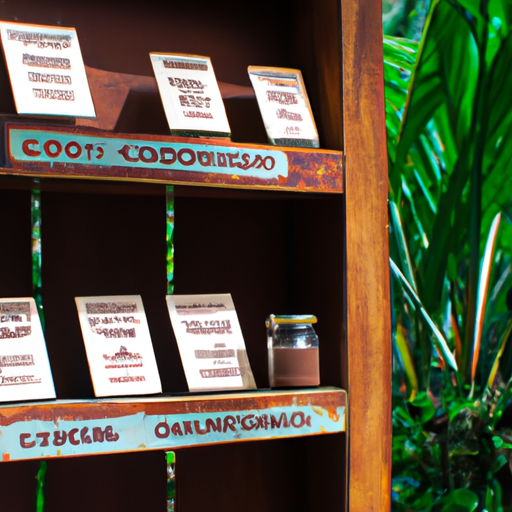Creating your own ceremonial cacao elixir involves opting for high-quality cacao, gathering various herbs and spices like rose and ginger, and selecting natural sweeteners such as honey or agave. Play around with different preparation methods, such as using a traditional whisk or adding nut milk, to discover your favorite flavor and texture. Customize your elixir by blending in herbal teas that suit your individual needs, setting mindful intentions in a sacred space, and contemplating the significance of cacao as you embrace a spiritual connection.
Appreciating cacao's rich history and health benefits adds depth to your ceremonial experience and enhances the connection to this ancient tradition. More insights await to enrich your ceremonial cacao journey!
Key Takeaways
- Select ceremonial grade cacao for quality and energetic benefits.
- Experiment with preparation tools like a whisk or molinillo for a foamy texture.
- Personalize elixir by adding herbs, spices, and natural sweeteners.
- Set positive intentions in a sacred space for a mindful cacao experience.
- Embrace cacao's spiritual significance and its ancient history during the ceremony.
Select Quality Cacao
When crafting a ceremonial cacao elixir, my go-to choice is always ceremonial grade cacao for its exceptional quality and energetic benefits. Essential for a successful ceremonial experience due to its purity and non-alkalized nature. The specific criteria for quality cacao, such as being whole and pure, guarantee that the cacao elixir is potent and effective. Consuming high-quality cacao enhances the overall experience and allows for a deeper connection during ceremonies.
To create a potent ceremonial cacao recipe, it's vital to start with the best-quality cacao available. Ceremonial grade cacao provides the ideal conditions for crafting a powerful elixir that resonates with the ceremonial intentions. By selecting ceremonial grade cacao, the energetic benefits and purity of the cacao are maximized, leading to a more profound ceremonial experience. When choosing cacao for your ceremonial cacao elixir, prioritize quality to elevate the effectiveness of the elixir and create a meaningful ceremony.
Gather Herbs and Spices

To enhance the ceremonial cacao elixir, I gather herbs and spices like rose, blue lotus, and ginger for added flavor and benefits. These ingredients not only bring a delightful aroma but also offer unique health benefits that complement the cacao experience. Additionally, spices such as cinnamon, cardamom, and cayenne can provide a touch of importance and complexity to the elixir, creating a truly immersive sensory experience.
Experimenting with different combinations of herbs and spices allows me to personalize my cacao elixir, tailoring it to my preferences and intentions for the ceremony. Each herb and spice chosen plays a vital role in enhancing the overall richness and depth of flavor in the cacao elixir, making each sip a journey of discovery and delight.
Choose Natural Sweeteners
How can natural sweeteners enhance the flavor of your ceremonial cacao elixir? Natural sweeteners like honey, agave, or maple syrup can bring out the rich and deep flavors of your cacao drink. These sweeteners add a touch of sweetness that complements the bitterness of the cacao, creating a well-balanced elixir for your ceremony. It's important to steer clear of processed sugars and artificial sweeteners to maintain the purity and natural essence of your ceremonial cacao elixir.
Consider using maple syrup as a natural sweetener for your cacao elixir. Maple syrup not only sweetens your drink but also adds a subtle earthy undertone that enhances the overall flavor profile. By opting for natural sweeteners like maple syrup, you're supporting a healthier and more sustainable approach to sweetening your ceremonial cacao elixir. Experiment with different natural sweeteners to find the perfect level of sweetness that resonates with you and enhances your ceremonial experience.
Experiment With Preparation Techniques

Exploring various preparation techniques can greatly impact the overall experience and taste of your ceremonial cacao elixir. When preparing your cacao elixir, consider using a traditional whisk or molinillo to blend the cacao. This method creates a foamy texture that adds a touch of authenticity to your ceremony. Experimenting with different sweeteners such as honey, maple syrup, or agave can notably alter the flavor profile of your elixir, enhancing the overall experience.
For a thicker and more indulgent consistency, try adding nut milk or butter to your cacao elixir. This not only enriches the texture but also provides a creamy mouthfeel that elevates the ceremony. Blending your ingredients until foamy not only enhances the taste but also adds to the presentation of your cacao elixir, making it visually appealing and inviting.
Personalize With Herbal Teas
When personalizing your ceremonial cacao elixir with herbal teas, consider the selection of herbs that resonate with you.
Experiment with different flavor combinations to find ones that enhance the richness of the cacao.
Try various brewing techniques to extract the best taste and benefits from the herbal teas you choose.
Herbal Tea Selection
In crafting a ceremonial cacao elixir, I find that selecting herbal teas such as rose, blue lotus, and ginger can greatly enhance the flavor profile and overall experience. Each herbal tea brings its unique essence to the cacao drink, adding layers of aroma and taste.
The choice of herbal teas can cater to your specific requirements, whether you seek relaxation, energy, or immune support during your cacao ritual. By carefully selecting herbal teas that resonate with you, you infuse your ceremony with intention and vigor.
Experimenting with different herbal teas allows you to create a personalized blend that resonates with your soul, enriching your ceremonial cacao elixir with depth and complexity.
Flavor Combinations
Enhancing the flavor profile of a ceremonial cacao elixir can be achieved by skillfully incorporating personalized herbal tea combinations. When personalizing your elixir, consider these herbal tea options to create a delightful experience:
- Rose Petals: Add a touch of romance and sweetness to your cacao elixir with fragrant rose petals. They infuse a floral essence that beautifully complements the rich, chocolatey notes of the drink.
- Blue Lotus: Elevate your cacao ritual by incorporating blue lotus tea, known for its calming and euphoric effects. This delicate floral tea can enhance the sensory experience of your elixir, creating a soothing ambiance.
- Ginger: For a hint of warmth and spice, ginger tea can be a perfect addition to your hot chocolate elixir. Its zesty kick adds complexity and depth to the flavor profile, making each sip a harmonious blend of flavors.
Brewing Techniques
To personalize the flavor profile of your ceremonial cacao elixir, consider incorporating herbal teas using specific brewing techniques. Herbal teas like rose, blue lotus, and ginger can enhance the cacao ceremony experience by adding unique medicinal properties and aromas.
Each herbal tea brings its own set of benefits that can complement the natural richness of ceremonial cacao, providing depth, complexity, and additional health advantages to your elixir. By experimenting with various herbal teas, you can elevate the sensory journey of your cacao ritual, creating a more personalized and intimate experience.
When brewing your cacao elixir with herbal teas, allow the flavors to meld together gently, ensuring a harmonious blend that enhances the overall essence of your ceremonial drink.
Set Intentions Mindfully

When establishing intentions mindfully for your ceremonial cacao ritual, it's crucial to select meaningful goals that resonate with your heart. Focusing on positive energy can assist in uplifting your intentions and creating a harmonious atmosphere for your ceremony.
Embracing the spiritual connection that intention setting offers can enhance your experience and bring a sense of purpose to your ritual.
Choose Meaningful Intentions
Crafting a Ceremonial Cacao Elixir involves the essential step of mindfully setting meaningful intentions. When choosing intentions for your ceremony, it's important to ponder the following:
- Clarity: Guarantee your intentions are clear and specific, guiding the energy flow effectively.
- Relevance: Select intentions that hold personal, spiritual, or emotional significance to deepen the ceremony's impact.
- Manifestation: Clear intentions enhance the potential for manifestation during the ceremony, amplifying the overall experience.
Focus on Positive Energy
Focusing on positive energy through mindful intention setting is crucial for enhancing the overall experience of a cacao ceremony. Before beginning the ceremony, take a moment to set intentions that align with your heart's desires.
By setting positive intentions, you create a sacred space filled with love, healing, and connection. Your intentions act as a compass, guiding the energy flow of the ceremony towards your goals.
Embrace the power of positive energy by focusing on intentions that promote harmony, joy, and transformation. Allow these intentions to infuse every sip of your ceremonial cacao elixir, amplifying its effects and deepening your experience.
Embrace Spiritual Connection
Embracing spiritual connection through mindful intention setting is a foundational aspect of enhancing the ceremonial cacao experience. When setting intentions for your cacao ritual, remember to:
- Reflect: Take a moment to connect with your inner self and contemplate the intentions you wish to set.
- Visualize: Envision your intentions manifesting as you drink the cacao, allowing the energy to flow through you.
- Express Gratitude: Show appreciation for the cacao spirit and all the experiences, lessons, and healing it may bring forth.
Appreciate and Connect With Cacao

Appreciating and connecting with cacao begins by acknowledging its revered status as 'The Food of the Gods' among the Mayans and Aztecs. When drinking cacao, it's crucial to honor its ancient history and the significance it holds in ceremonies.
Before sipping the elixir, take a moment to reflect on the spiritual connection that cacao has fostered for centuries. As you raise the cup to your lips, consider the theobromine present in cacao, a natural stimulant that can uplift your mood and sharpen your focus.
This divine drink isn't just a treat for your taste buds; it's a source of antioxidants that can combat inflammation and support your heart health. With each sip, let the phenylethylamine in cacao envelop you in feelings of love and happiness, enhancing your ceremonial experience.
Embrace the rich tradition of cacao ceremonies and let this sacred elixir nourish not just your body, but also your soul.
Frequently Asked Questions
How to Do a Cacao Ceremony Step by Step?
I prepare for a cacao ceremony by creating a sacred space, heating water, selecting high-quality ceremonial cacao, blending it with herbal tea and spices, savoring it mindfully, and reflecting on its effects afterward.
Can You Do a Cacao Ceremony by Yourself?
Absolutely, I can perform a cacao ceremony by myself. It's a beautiful way to connect with cacao's spirit, set intentions, and explore personal reflection. Doing it solo allows for deep, introspective moments of growth and healing.
How Is Ceremonial Cacao Made?
To make ceremonial cacao, high-quality beans are sourced, fermented, roasted, and ground. The paste or powder is mixed with water or ingredients for a creamy elixir. Some recipes include herbs or sweeteners. The process honors cacao's sacred properties.
Can You Drink Ceremonial Cacao Everyday?
Absolutely, I drink ceremonial cacao daily. It's a ritual that infuses my day with warmth and mindfulness. Quality matters, so I adjust my intake based on how I feel. Regular sips deepen my connection to its heart-opening magic.
Can I Use the Same Steps for Making a Delicious Cacao Drink Recipe to Craft a Ceremonial Cacao Elixir?
Yes, you can use the same steps for making a delicious cacao drink recipe to craft a ceremonial cacao elixir. The key is to use high-quality cacao and follow the traditional methods for preparing the ceremonial beverage. The result will be a rich and flavorful cacao elixir perfect for ceremonial rituals.
Conclusion
Crafting your own ceremonial cacao elixir is a unique and rewarding experience that allows you to connect with the ancient traditions of cacao while infusing your own personal touch.
By selecting quality ingredients, experimenting with preparation techniques, and setting mindful intentions, you can create a truly special elixir that reflects your individual tastes and intentions.
So next time you feel like indulging in a warm, nourishing treat, consider crafting your own ceremonial cacao elixir for a truly magical experience.










